A story of innovation, infrastructure, empowerment and global ascendance: the momentum is real, bold and worth cheering.
From high-speed expressways and freight corridors to mega-ports, airports, and clean-energy gigaprojects, these 50 projects are rewiring India’s logistics, productivity, and quality of life.
# Project / Corridor | Sector | States / Location | Status
-- --------------------------------------------------|---------------------|--------------------------------------------------|-------------------------------
1 Delhi–Mumbai Expressway (1,386 km) | Expressway | Delhi, HR, RJ, MP, GJ, MH | Partly operational; nearing completion
2 Mumbai–Nagpur Samruddhi Mahamarg (701 km) | Expressway | Maharashtra | Largely operational
3 Ganga Expressway (594 km) | Expressway | Uttar Pradesh | Under construction
4 Purvanchal Expressway (341 km) | Expressway | Uttar Pradesh | Operational
5 Bundelkhand Expressway (296 km) | Expressway | Uttar Pradesh | Operational
6 Bengaluru–Chennai Expressway (262 km) | Expressway | Karnataka, Tamil Nadu, Andhra Pradesh | Under construction
7 Delhi–Amritsar–Katra Expressway (669 km) | Expressway | Delhi, HR, PB, J&K | Under construction
8 Raipur–Visakhapatnam Expressway (464 km) | Expressway | Chhattisgarh, Odisha, Andhra Pradesh | Under construction
9 Dwarka Expressway | Urban Expressway | Delhi, Haryana | Nearing completion
10 Delhi–Meerut Expressway (96 km) | Expressway | Delhi, Uttar Pradesh | Operational
11 Western Dedicated Freight Corridor (WDFC) | Rail – Freight | Dadri–JNPT (NCR–MH) | Largely commissioned; balance in progress
12 Eastern Dedicated Freight Corridor (EDFC) | Rail – Freight | Ludhiana–Dankuni (PB–WB) | Substantial sections commissioned
13 Mumbai–Ahmedabad High-Speed Rail | Rail – HSR | Maharashtra, Gujarat | Under construction
14 Vande Bharat Rolling Stock Scale-up | Rail – Passenger | Pan-India | Ongoing deployment
15 Udhampur–Srinagar–Baramulla Rail Link (USBRL) | Rail – Strategic | J&K (incl. Chenab Bridge) | Nearing completion (phased)
16 Delhi–Meerut RRTS (82 km) | Regional Rapid Rail | Delhi, Uttar Pradesh | First sections operational
17 Station Redevelopment (e.g., NDLS, CSMT, etc.) | Rail – Stations | Pan-India | Under implementation
18 Kolkata Metro East–West Corridor | Metro | West Bengal (Kolkata) | Partly operational; tunnelling completed
19 Delhi Metro Phase-IV (65+ km) | Metro | Delhi | Under construction
20 Mumbai Metro (Lines 2,3,4,6,9, etc.) | Metro | Maharashtra (Mumbai MMR) | Under construction / phased ops
21 Bengaluru Metro Phase-2/2A/2B | Metro | Karnataka (Bengaluru) | Under construction
22 Pune Metro (Ph-1 expansion) | Metro | Maharashtra (Pune/PCMC) | Phased operations under way
23 Nagpur Metro Phase-2 | Metro | Maharashtra (Nagpur) | Under construction
24 Ahmedabad Metro Phase-2 | Metro | Gujarat (Ahmedabad–Gandhinagar) | Under construction
25 Navi Mumbai International Airport (NMIA) | Aviation | Maharashtra (Navi Mumbai) | Advanced construction
26 Noida International Airport (Jewar) | Aviation | Uttar Pradesh (Gautam Buddha Nagar) | Under construction
27 Goa Mopa International Airport (MOPA) | Aviation | Goa (North) | Operational (Phase-1)
28 Bengaluru Airport T2 & Cargo Expansion | Aviation | Karnataka | Commissioned/expanding
29 Delhi IGI Capacity Upgrades (Runways/Terminals) | Aviation | Delhi | Ongoing upgrades
30 Pune New Intl Airport (Purandar) | Aviation | Maharashtra | Planned / approvals in progress
31 Vadhavan Deep-Sea Port | Ports & Shipping | Maharashtra (Palghar) | Approved / pre-construction
32 Vizhinjam International Seaport (Transshipment) | Ports & Shipping | Kerala (Trivandrum) | Trial operations; ramp-up ongoing
33 Great Nicobar Transshipment Port (Galathea Bay) | Ports & Shipping | Andaman & Nicobar Islands | Approved / early works
34 JNPT Expansion (4th Container Terminal, etc.) | Ports & Shipping | Maharashtra (JNPT) | Under implementation
35 Paradip Port Capacity Expansion | Ports & Shipping | Odisha | Under implementation
36 Deendayal (Kandla) Port Enhancements | Ports & Shipping | Gujarat | Ongoing capacity projects
37 Dhamra Port Expansion | Ports & Shipping | Odisha | Under implementation
38 Sagarmala Anchor Projects (select berths/ICDs) | Ports & Logistics | Pan-India coastal | Multiple ongoing
39 Khavda Renewable Energy Park (~30 GW) | Energy – RE (Hybrid)| Gujarat (Kutch) | Under rapid build-out
40 Bhadla Solar Park (expansions) | Energy – Solar | Rajasthan | Operational + expansions
41 Ladakh Renewable Park (~10–13 GW) | Energy – RE | UT of Ladakh | Planned / development mode
42 Green Energy Corridor (Ph-I & II) | Energy – Grid | Multi-state | Under implementation
43 Subansiri Lower HEP (2,000 MW) | Energy – Hydro | Arunachal/Assam | Advanced construction
44 Dibang Multipurpose Project (2,880 MW) | Energy – Hydro | Arunachal Pradesh | Under construction
45 Jaitapur Nuclear Power Project (9,900 MW) | Energy – Nuclear | Maharashtra | Pre-project/land/clearances advancing
46 Kudankulam Nuclear Units 3–6 | Energy – Nuclear | Tamil Nadu | Under construction
47 Mumbai Trans-Harbour Link (MTHL) | Urban Infra | Maharashtra (Mumbai–Navi Mumbai) | Operational (2024/25) with finishing works
48 Mumbai Coastal Road Project | Urban Infra | Maharashtra (Mumbai) | Phased openings; final works ongoing
49 Ken–Betwa River Link (Phase-I) | Water & Irrigation | MP, Uttar Pradesh | Under implementation
50 Jal Marg Vikas (National Waterway-1, Ganga) | Inland Waterways | UP–Bihar–Jharkhand–WB | Phased commissioning; terminals operational
1. Science & Technology: The Innovation Surge




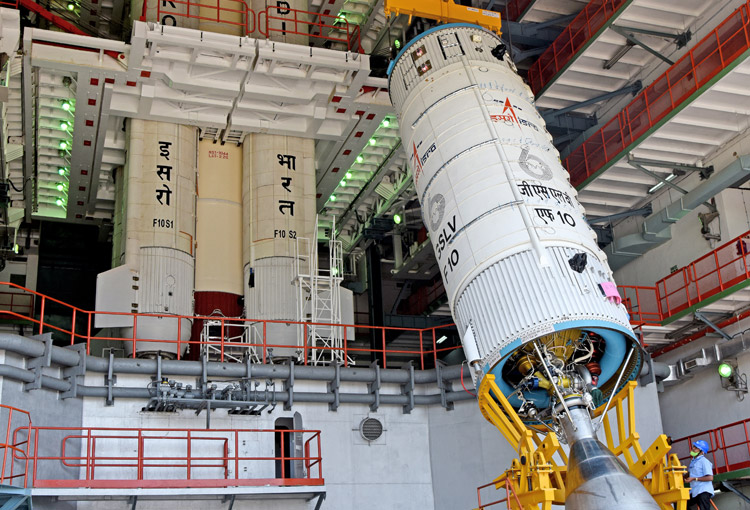

India has surged forward in science and tech — not just in incremental tweaks but in bold reform and breakthrough. A few stand-outs:
-
The country is building the capacity to design, develop and manufacture advanced systems in defence, electronics, drones, radar and more — enabling export ambitions and deep tech leaps. (Invest India)
-
A dedicated body for drones — the Drone Federation India (DFI) — with over 550 companies and 5,500 pilots, is positioning India to be a global drone-hub by 2030. (Press Information Bureau)
-
In parallel, reforms in procurement, indigenisation and R&D have unlocked private sector engagement, creating a more innovation-driven ecosystem. (Drishti IAS)
-
In short: the shift from “import-dependent” to “technology-creator and exporter” is under way.
Indian Space Research Organisation (ISRO), Indian National Space Promotion and Authorisation Centre (IN-SPACe) & India’s Space Sector Reforms and Achievements
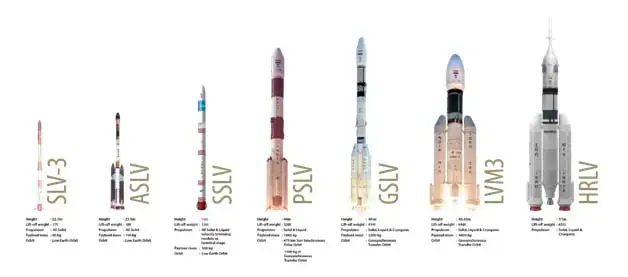


Here’s a deep dive into how India’s space sector has been transformed over the last decade—with sweeping reforms, commercial engagement, and genuine scientific breakthroughs.
1. Major Reforms: Opening the Space Frontier
-
India has liberalised the space domain so that non-government entities (NGEs) can participate in full space activities (satellite manufacturing, launch services, ground stations, etc.). (Press Information Bureau)
-
The Indian Space Policy 2023 and accompanying Norms, Guidelines & Procedures (NGP) were introduced to give regulatory clarity and foster private sector and start-up participation. (Press Information Bureau)
-
The regulatory body IN-SPACe has been established to authorise, promote and supervise private space activities and public-private partnerships (PPP). (Press Information Bureau)
-
Policies now permit up to 100% Foreign Direct Investment (FDI) in satellite development and related services, and licensing processes have been simplified. (IMPRI Institute)
-
The government has introduced seed funds, technology adoption funds, mentorship programmes and other supports for start-ups in space tech. (Press Information Bureau)
Why it matters:
These reforms shift India’s space sector from being purely a government agency-driven model to a mixed ecosystem where private industry, start-ups and global collaborations can play a full role. That means faster innovation, increased manufacturing capacity, export readiness and a broadening of space applications (commercial, defence, remote sensing, telecom).2. Key Achievements: Scientific, Commercial & Strategic
Scientific & Mission Breakthroughs
-
India achieved a successful soft landing near the lunar south pole with Chandrayaan‑3 (2023), a global first in that region. (Planetary Society)
-
The Aditya‑L1 mission to study the Sun from the Lagrange L1 point is a flagship heliophysics mission by ISRO. (Medium)
-
India is preparing to launch larger satellites: e.g., reports show a 6,500 kg U.S. built comms satellite will launch from Indian soil — showing capability to handle heavier payloads. (The Times of India)
-
The space budget has nearly tripled over the past decade—from around ₹5,615 crore in 2013-14 to about ₹13,416 crore in 2025-26. (India Strategic)
Commercial & Global Market Ambitions
-
India’s space economy is expected to grow to about USD 44 billion by 2033, with exports contributing around USD 11 billion. (CII Blog)
-
India is aiming for ~8% share of the global space market by 2033. (World Economic Forum)
-
Over 250 space start-ups are active in India (satellite tech, propulsion, imaging) and many missions & contracts are under PPP/private participation. (Press Information Bureau)
Systemic/Capacity Gains
-
The trusted launch-vehicle programme (PSLV) has delivered dozens of missions, making India a globally cost-effective launch provider. (Next IAS)
-
India has developed self-reliance (“Atmanirbhar”) in many space-technologies—launch vehicles, satellites, ground systems. (ISRO)
3. What This Means for India Rising
-
Technology & Innovation: The space sector is a tough frontier. Mastering it signals technological maturity—satellite design, propulsion systems, remote sensing, communications, even human spaceflight. That carries spill-overs into defence, manufacturing, advanced materials, AI & data.
-
Exports & Global Positioning: With clear ambition to serve the global market, India’s space sector can bring in foreign revenue, create high-tech jobs, become part of global value-chains.
-
Infrastructure & Ecosystem: Launchpads, satellite fabrication, ground stations, tracking systems, regulatory sandbox—all create infrastructure that elevates the broader tech ecosystem.
-
Inclusion & Start-ups: The fact that over 250 start-ups are active means young talent is being harnessed. Private-sector growth means more innovation, more diverse applications (Earth observation, agriculture, environment, telecom).
-
Strategic & Sovereignty Gains: Space assets are critical for navigation, communications, remote sensing, climate-monitoring, defence. India having capability reduces dependence and increases strategic autonomy.
-
Inspirational & Culture-shift: Missions like Chandrayaan-3, Aditya-L1 are inspirational—they shift public perception, attract talent, build national confidence.
-
“From a space budget of ~₹5,615 crore in 2013-14 to ~₹13,416 crore in 2025-26” — showing investment commitment. (India Strategic)
-
Mission to lunar south-pole: India as first nation to land there. (Planetary Society)
-
Industry growth: >250 start-ups, strong private participation. (Press Information Bureau)
-
Global ambition: USD 44 billion whole space economy by 2033, 8% global market share. (World Economic Forum)
-
Regulatory reform: full liberalisation of space activities, simplified licensing, 100% FDI. (IMPRI Institute)
-
Why it matters: Science & tech are the engines of global competitiveness. When India can design radar systems, drones and missiles, when its research institutes, startups and industry collaborate fluidly — then it’s not just catching up, it's stepping into the front-row.
2. Defence Reforms, Radar, Missiles, Drones & Rising Exports
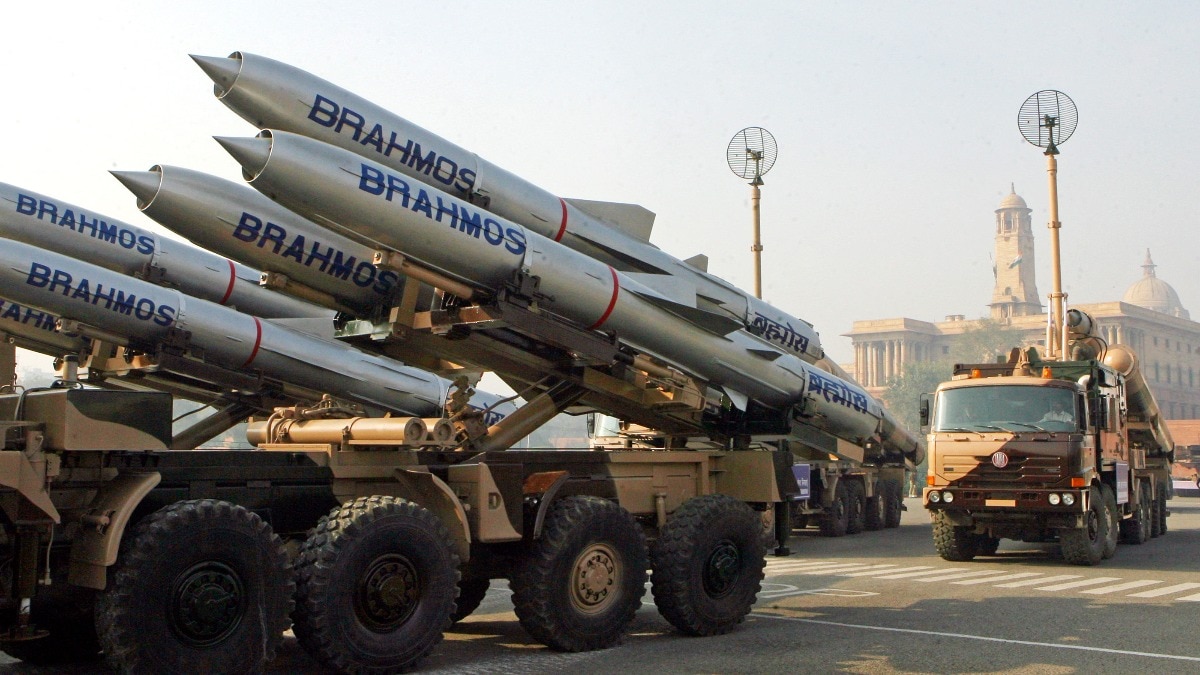


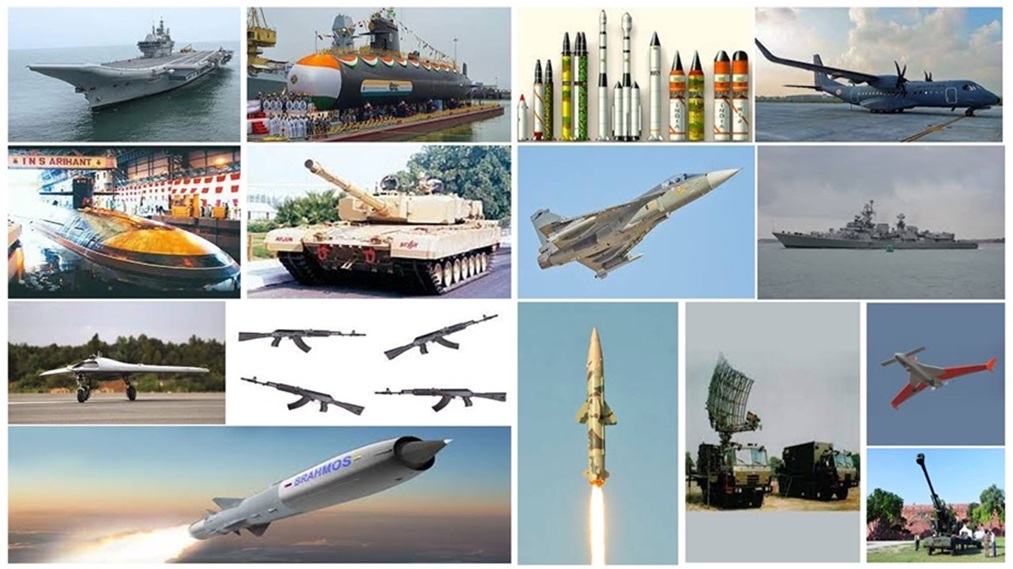
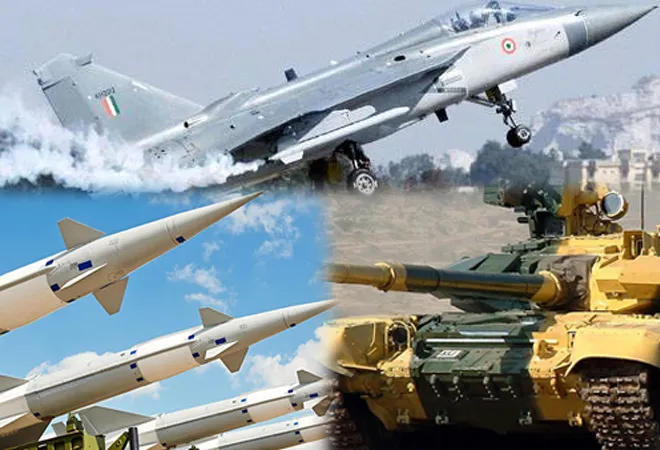

What’s thrilling is the transformation of India’s defence industrial base:
-
Defence exports have risen dramatically: from around ₹686 crore (~US$100 m) in 2013-14 to over ₹21,000-plus crore (~US$2.6 b) in 2023-24. (Swadeshi Shodh Sansthan)
-
Products now include radar systems, artillery, unmanned aerial systems, supersonic missiles and more — high-tech, global-market-ready systems. (United Service Institution of India)
-
Policy reforms such as reduced GST on drones / defence equipment, easier procurement and private sector access have helped. (India Brand Equity Foundation)
-
The defence manufacturing industry is increasingly becoming part of the export narrative: Indian companies collaborating globally, building supply chains and earning foreign revenue. (Press Information Bureau)
Upshot: India isn’t merely buying defence gear — it’s manufacturing, innovating and exporting. That elevates the country’s strategic positioning, industrial base and technological maturity.
3. Educational Reforms & Expansion

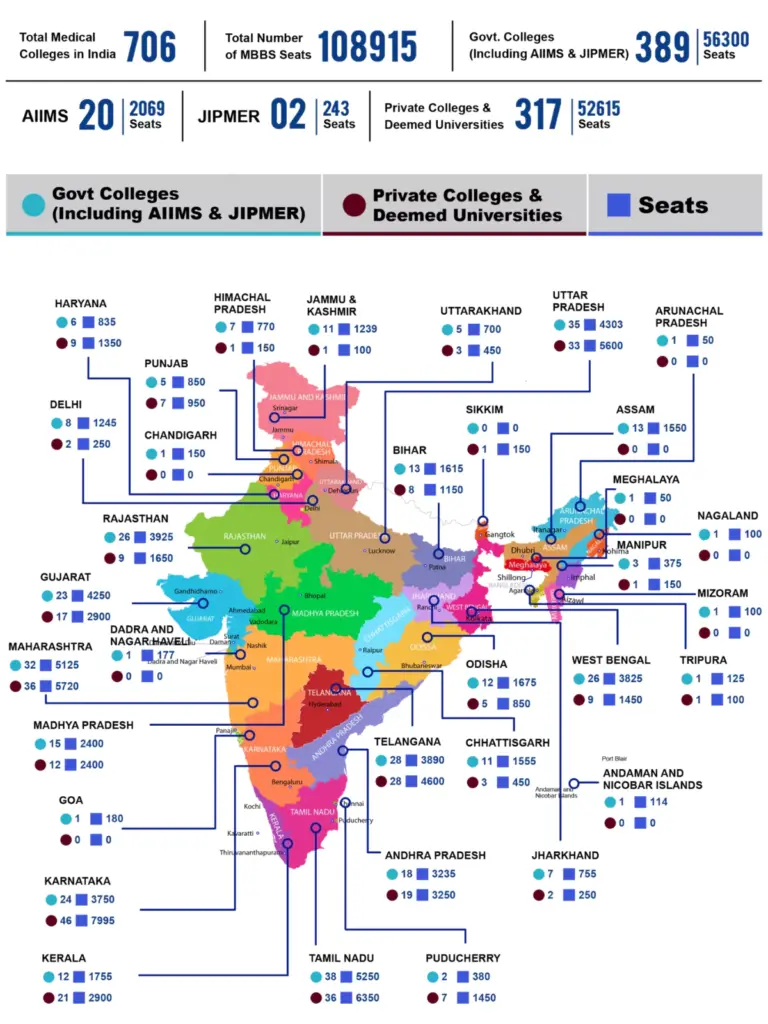

A strong education system is critical for sustaining growth. India has made bold moves:
-
The National Education Policy 2020 (NEP 2020) emphasizes access, equity, quality, affordability and accountability. It lays out reforms for holistic, multidisciplinary and flexible education in schools and universities. (Press Information Bureau)
-
Higher education linkages with research, industry and innovation have been expanded: new Centres of Excellence in AI, new campuses, new institutes approved. (Govt Employees News)
-
Medical education has grown too: in one major move, over 10,000 new medical seats were approved across government colleges, as part of a push to boost healthcare human resources. (Press Information Bureau)
-
This means more skilled professionals, more research capability, more innovation and a knowledge-economy push.
Impact: When you educate millions more with quality, when institutions link with industry, when capacity expands in medicine, engineering and research — you build the backbone of a rising economy.
4. Health, Welfare & Human Development



India’s rise isn’t just economic — human development indicators reflect change:
-
Large roll-outs of health schemes, increased medical education capacity, and infrastructure mean more access to care. (Medical-seats expansion noted above)
-
On sanitation, drinking water, electricity and hygiene fronts, massive scale-up efforts have brought services to previously underserved corners of the country.
-
Important social indicators: e.g., maternal mortality ratio (MMR) and child mortality are on a falling trend — indicating better healthcare, nutrition and access.
-
Women’s & girls’ empowerment is gaining traction: greater access to education, skill development, female labour force participation and agency.
-
These changes generate virtuous cycles: healthier population ↔ greater productivity ↔ stronger economy.
5. Per Capita Income, Poverty Reduction & Economic Inflection
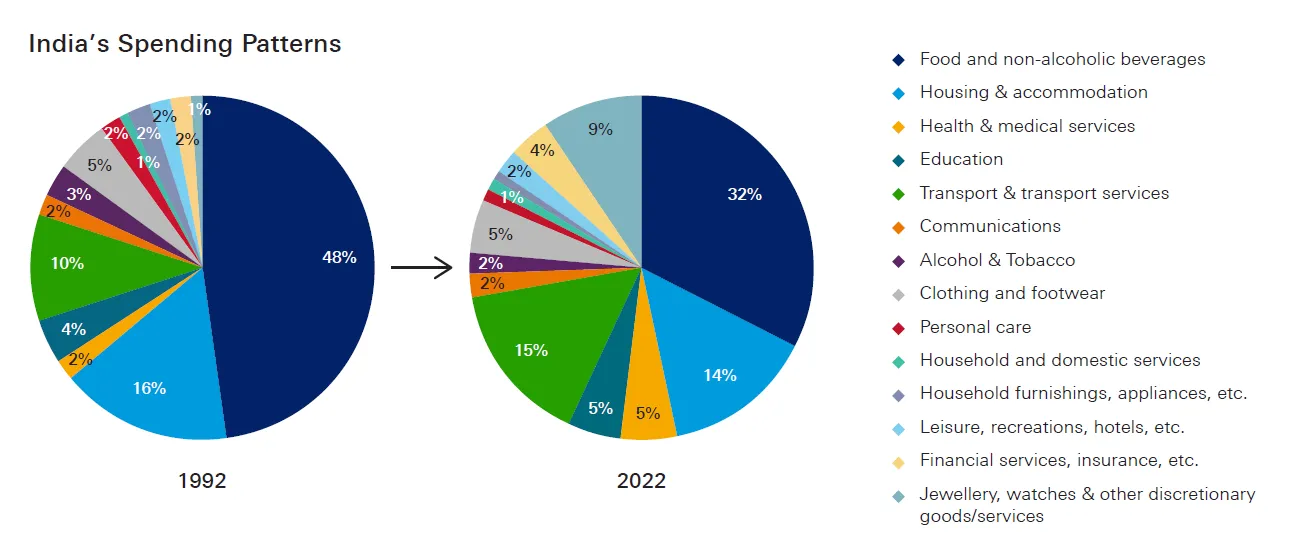

The numbers and trends show an economy at an inflection point:
-
India’s per-capita income has been rising — signalling that growth is translating into broader citizen benefit.
-
Poverty reduction: the decade has seen strong reductions in absolute poverty, thanks to growth, welfare schemes, infrastructure and connectivity.
-
The economy is shifting: many global companies are relocating Global Capability Centres (GCCs), manufacturing operations and supply‐chain functions to India, recognising cost-advantage, talent-pool and reform momentum.
-
Deep-tech, fintech, innovation, manufacturing are all part of the rising crest.
-
In sum: India is moving from being a “fast-growing economy” to a “rising middle‐income advanced economy”.
6. FinTech & Digital Payments Revolution


One of the most remarkable stories: digital payments and fintech.
-
The instant-payments system Unified Payments Interface (UPI) now accounts for about 85% of all digital transactions in India. (Press Information Bureau)
-
In October 2025 alone, for example, UPI recorded ~₹27.28 lakh crore in transaction value and ~20.7 billion transactions in a month. (adda247)
-
Digital inclusion has accelerated — more merchants, more users, more rural adoption.
-
Fintech innovation around this is booming: payments, micro-credits, merchant services, digital wallets, QR codes — India is globally renowned in this domain.
-
The ecosystem supports small businesses, informal economy, consumption and banking inclusion.
Why exciting: When payments become seamless, inclusive and universal — friction disappears. That drives consumption, entrepreneurship, formalisation, growth.
7. Infrastructure: Roads, Airports, Ports, Logistics & Trade
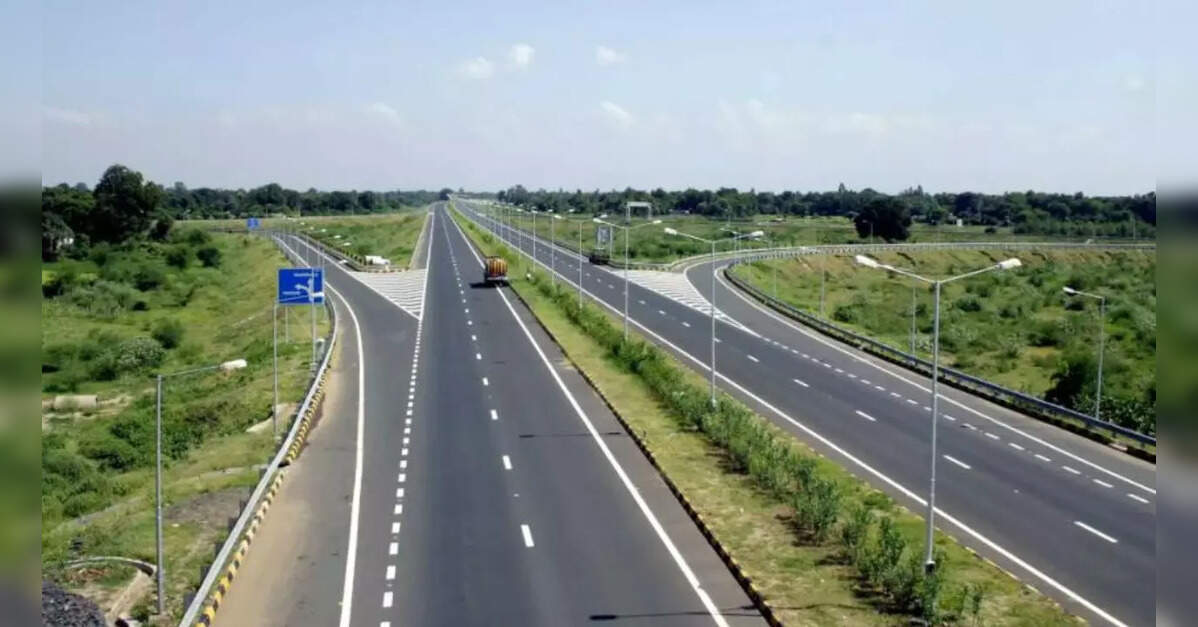
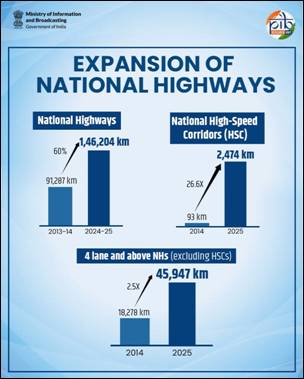
Infrastructure is the concrete foundation of the rise — literally and figuratively. Highlights:
-
Since about 2014, India’s budget allocation for roads & highways has increased around 500%. (Press Information Bureau)
-
The pace of highway construction reached ~37 km/day in 2020-21. (Press Information Bureau)
-
Infrastructure investment is projected to rise from ~5.3% of GDP (FY24) to ~6.5% by FY29. (India Brand Equity Foundation)
-
The ‘logistics-corridor’ plan connects inland, ports, airports, enabling faster trade and movement. (India Brand Equity Foundation)
-
Large scale expansions of airports, ports, expressways, and rail connectivity are underway — improving ease of living, reducing freight costs, boosting exports.
🚄 Expressways & Railways: The Silent Engines Powering India’s Transformation
Over the past decade, India has undergone one of the largest infrastructure upgrades in the world, building expressways at unprecedented speed, modernizing railways, and creating a logistics network that is reshaping mobility, commerce, tourism, and investment.
This isn’t incremental change — it is structural transformation.
🛣️ 1. Expressways: A National Network of High-Speed Connectivity
India is building expressways at global speed and scale, connecting metros, industrial hubs, tier-2 cities, ports, and borders with seamless, access-controlled corridors.
✅ Major Expressways Already Operational or Near Completion
-
Delhi–Mumbai Expressway (1,386 km)
One of the world’s longest expressways — cuts travel time from 24 hours to 12 hours.
Boosts industrial corridors, logistics hubs, warehousing, tourism, and real estate across 6 states. -
Purvanchal Expressway (341 km)
Transforms eastern Uttar Pradesh; reduces travel times dramatically; boosts agriculture, MSMEs, defence corridors. -
Bundelkhand Expressway (296 km)
Integrates backward regions into national markets; direct link to the Defence Industrial Corridor. -
Ganga Expressway (594 km)
Massive economic corridor across UP — connecting west and east, benefiting millions. -
Mumbai–Nagpur Samruddhi Mahamarg (701 km)
Connects Maharashtra’s largest cities; accelerates industrial growth, exports, farm-to-market links, and tourism. -
Lucknow–Kanpur Expressway, Nagpur–Goa Expressway, Hyderabad Regional Corridors
Each adding connectivity, investment, and regional prosperity. -
Dwarka Expressway, Delhi-Meerut Expressway
Rapid urban connectivity → soaring real estate, jobs, urban decongestion.
✅ Impact of Expressways
-
Travel time between key metros has halved in many cases.
-
Logistics costs are falling, enabling India to compete globally.
-
New industrial parks, townships, data centers, and warehouses emerging along expressways.
-
Property values rising, new jobs emerging in construction, hospitality, food services, and retail.
-
Better farm-to-market links mean reduced wastage, higher farmer incomes.
-
Safer, faster, pollution-free travel compared to old highway networks.
Expressways are not just roads — they are economic arteries.
🚆 2. Railways: Modern, Electric, High-Speed, and Future-Ready
Indian Railways is undergoing the biggest modernization in its history — electrification, high-speed trains, new lines, upgraded stations, world-class safety systems, and Vande Bharat revolution.
✅ Key Railway Transformations
-
100% Rail Electrification of Broad Gauge
India now has one of the largest electrified railway networks globally — cheaper, cleaner, faster transport. -
Vande Bharat Trains
Semi-high-speed, modern, comfortable and designed in India — running across the country and expanding rapidly. -
Dedicated Freight Corridors (DFC)
-
Western DFC
Reduces Delhi–Mumbai freight time from 72 hours to 24 hours. -
Eastern DFC
Huge boost for coal, minerals, heavy freight, industrial clusters.
-
-
Upgraded Railway Stations
1300+ stations being redeveloped into modern terminals with malls, concourses, multi-modal integration. -
Kavach Anti-Collision System
Indigenous, world-class safety system being expanded across routes. -
High-Speed Rail Corridors (Bullet Train)
Mumbai–Ahmedabad project progressing rapidly; future corridors planned. -
New tunnels, bridges, rail lines in Kashmir, Northeast, Himalayan regions
Integrating remote areas and boosting security, tourism, and commerce.
✅ Impact of Railway Modernization
-
Faster & safer passenger travel across India.
-
Freight movement becomes cheaper, predictable, globally competitive.
-
Ports → factories → markets connected by electrified rail.
-
Tourism booming thanks to better connectivity and faster trains.
-
Industrial output rising as logistics bottlenecks disappear.
-
New jobs across construction, engineering, electronics (Kavach), rolling stock manufacturing.
Railways are becoming the backbone of India’s economic rise.
🚚 3. Combined Impact: Logistics Revolution Underway
When expressways, railways, ports, and airports combine, you get a logistics powerhouse.
✅ National Logistics Transformation
-
Logistics cost expected to fall from 14–15% of GDP to 8–10% in coming years.
-
Multi-modal connectivity → faster exports, stronger supply-chains.
-
More factories setting up near expressways & freight corridors.
-
Global companies choosing India due to better logistics:
Apple, Foxconn, Boeing, Samsung, Airbus, Bosch, Cummins, GE, ZF, Schneider, Walmart, JPMC, Microsoft — and hundreds more.
✅ Impact on Citizens
-
Faster travel, safer roads, cheaper transportation.
-
More jobs (construction, engineering, transport, retail, hospitality).
-
Growth in tourism hotspots connected by new expressways and Vande Bharat trains.
-
Cleaner environment due to electrified trains and reduced congestion.
🌟 4. Why This is Transformational
India’s infrastructure push is creating a once-in-a-century development shift:
-
From slow travel → to national high-speed corridors
-
From congested lines → to dedicated freight networks
-
From random roads → to planned economic expressways
-
From isolated regions → to integrated national economy
These expressways and railways are reshaping India’s geography of opportunity — unlocking jobs, reducing poverty, attracting investment, and giving millions access to mobility and markets.
This is the backbone of India’s rise — silent, powerful, and historic.
-
-
Example: A 464 km expressway linking Raipur–Visakhapatnam is set to revolutionise connectivity in eastern/central India. (The Times of India)
Here are two clean, blog-ready text tables that you can copy–paste directly into your article:
✅ Table 1: Top 20 Expressways in India
(Length • States • Status — ready for publication)
Expressway Name | Length (km) | States Covered | Status ----------------------------------------|-------------|--------------------------------------|---------------------------- Delhi–Mumbai Expressway | 1,386 | Delhi, Haryana, Rajasthan, MP, GJ, MH | Partially operational; nearing completion Mumbai–Nagpur Samruddhi Mahamarg | 701 | Maharashtra | Operational (major stretches) Ganga Expressway | 594 | Uttar Pradesh | Under construction Purvanchal Expressway | 341 | Uttar Pradesh | Operational Bundelkhand Expressway | 296 | Uttar Pradesh | Operational Yamuna Expressway | 165 | Uttar Pradesh | Operational Agra–Lucknow Expressway | 302 | Uttar Pradesh | Operational Dwarka Expressway | 29 | Delhi, Haryana | Nearly complete Delhi–Meerut Expressway | 96 | Delhi, Uttar Pradesh | Fully operational Bengaluru–Chennai Expressway | 262 | Karnataka, TN, AP | Under construction Lucknow–Kanpur Expressway | 63 | Uttar Pradesh | Under construction Chennai–Salem Expressway | 277 | Tamil Nadu | Approved; early works ongoing Raipur–Visakhapatnam Expressway | 464 | CG, Odisha, Andhra Pradesh | Under construction Ahmedabad–Vadodara Expressway | 93 | Gujarat | Operational Delhi–Amritsar–Katra Expressway | 669 | Delhi, Haryana, Punjab, J&K | Under construction Hyderabad Regional Ring Road | 338 | Telangana | Approved / early phase works Nagpur–Goa Expressway (Shaktipeeth) | 760 | Maharashtra, Goa | Planned / early execution Shillong–Dawki Expressway | 92 | Meghalaya | Under construction Srinagar–Leh Z-Morh & Zojila Corridors | ~30 + 14 | J&K, Ladakh | Under construction (strategic tunnels) Noida–International Airport Expressway | 31 | Uttar Pradesh | Under construction✅ Table 2: Major Railway Corridors + DFC Impact
(Dedicated Freight Corridors & Major Rail Upgrades)
Corridor / Project | Type | Impact / Significance -----------------------------------------|------------------------------|--------------------------------------------------------------- Western DFC (Delhi–Dadri–JNPT) | Dedicated Freight Corridor | Cuts freight time 72h → 24h; boosts exports & port logistics. Eastern DFC (Ludhiana–Kolkata) | Dedicated Freight Corridor | Heavy freight (coal/steel) efficiency + industrial corridor boost. Mumbai–Ahmedabad High-Speed Rail | Bullet Train Corridor | First high-speed rail; major infra/tech leap; under construction. Delhi–Meerut RRTS | Regional Rapid Transit | High-speed commuter system; cuts 90 min → 35 min. Vande Bharat Expansion Network | Semi-high-speed passenger | Fast, modern travel connecting major metros & tourist hubs. Golden Quadrilateral Rail Upgrade | High-speed / Semi-HS | Faster freight & passenger between India’s top 4 metros. Delhi–Kolkata Semi-HS Corridor | Upgraded trunk route | Speed, punctuality, freight flow improvements. Delhi–Mumbai Semi-HS Corridor | Upgraded trunk route | Business, freight, and passenger movement boosted. Amritsar–Jammu–Srinagar Corridor | Strategic & passenger rail | Massive connectivity to J&K; Chenab Bridge world’s highest. Northeast Connectivity Mega-Projects | New lines, tunnels, bridges | Integrating NE states; tourism + trade surge. Bengaluru–Chennai High-Speed Corridor | Planned HS rail | Major southern industrial-economic corridor. Dedicated Port Connectivity Corridors | Freight | Faster movement from ports: Vizag, Chennai, Mundra, JNPT. Kavach Deployment Corridors | Safety | Indigenous anti-collision tech saving lives nationwide. Mumbai Suburban Upgrades | Urban Rapid Rail | Reduced congestion; new lines, AC locals. Kolkata Metro Expansion | Urban rail | More new lines; connecting airport, IT hubs. Delhi Metro Ph-IV | Urban metro | Massive network expansion; multi-modal integration. Navi Mumbai–Pune Railway Link | New line | Direct link boosting economic growth in Maharashtra. Jhansi–Prayagraj Semi-HS Upgrade | Passenger corridor | Tourism + trade boost in central India. Freight Smart Terminals | Logistics | Multi-modal hubs reducing turnaround time. Shimla, Darjeeling, Kangra heritage upgrades | Tourism rail | Enhanced tourism, better preservation &-
Expressway + Railway + DFC development is reducing logistics costs, unlocking exports, boosting industrial corridors, and linking backward regions.
-
Travel times are collapsing, freight is moving faster, and mobility is lifting millions into prosperity.
-
This infrastructure boom is transformational, not incremental — forming the backbone of India’s next phase of economic expansion.
-
The transformation is real, bold and poised for scale.
1. Mega Ports: Vadhavan & Vizhinjam as Game-Changers
Vadhavan Port (Maharashtra)



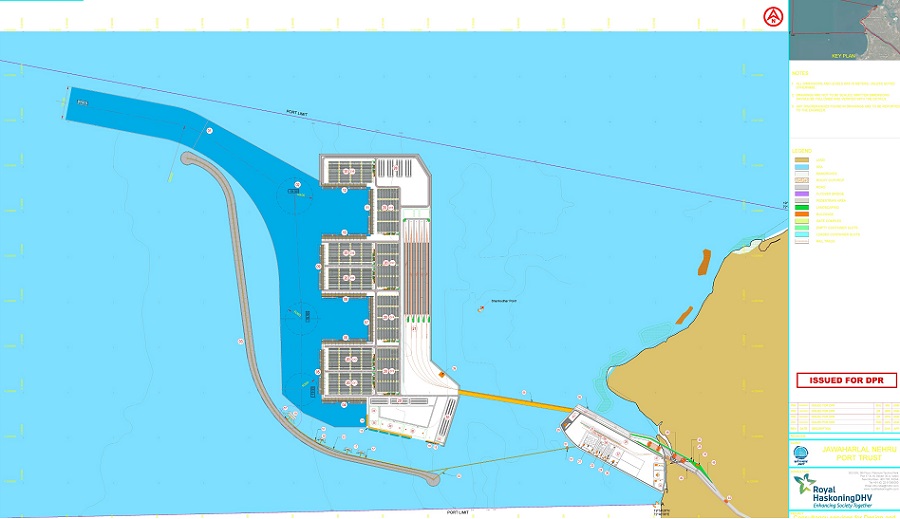
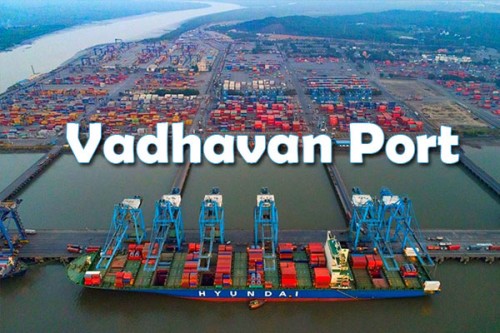
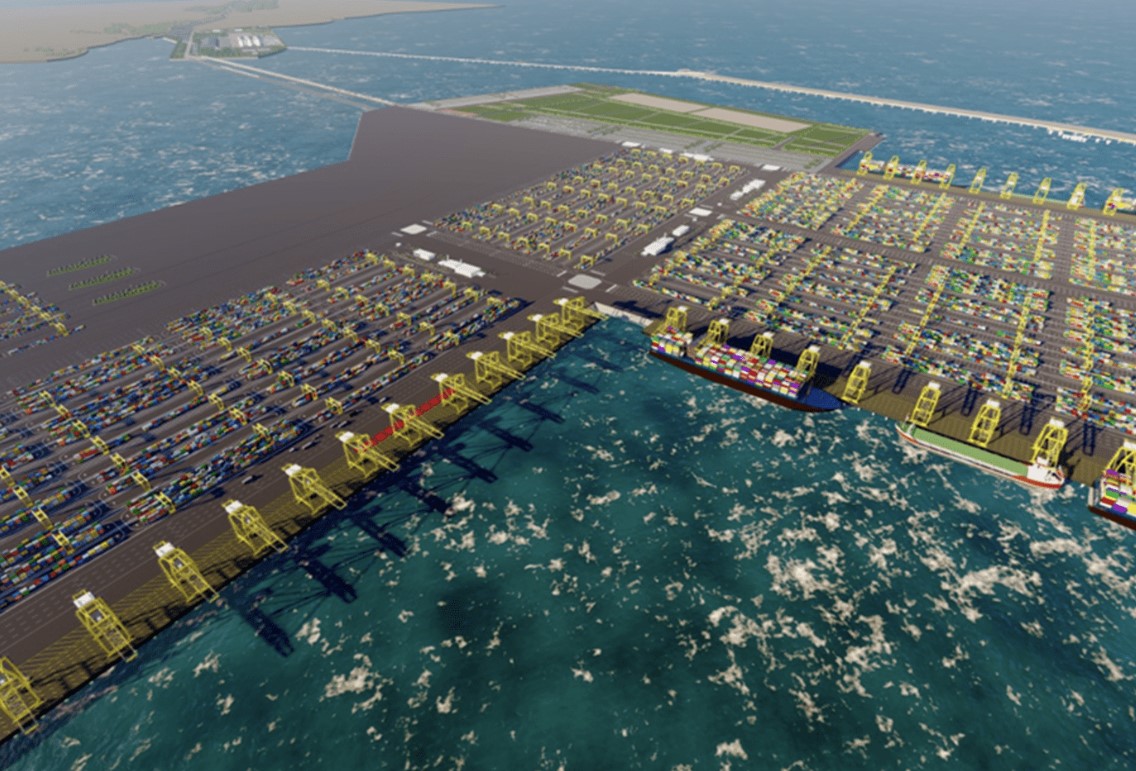
-
Vadhavan Port is a proposed green-field offshore deep-sea mega-port in Palghar district (west coast of India) being developed by Jawaharlal Nehru Port Authority (JNPA) and the Maharashtra Maritime Board (MMB) under a special purpose vehicle. (Wikipedia)
-
It has Cabinet approval and a project cost of around ₹ 76,220 crore (~US$9.1 billion). (Port Technology International)
-
It will be India’s 13th major port, with very deep draft (approx 18-20 m) to accommodate ultra-large container ships and other mega-vessels. (jnport.gov.in)
-
The envisaged capacity is massive — for example one report says ~298 million metric tonnes per year, and ~23.2 million TEUs of container handling upon full realisation. (IAS Gyan)
-
Strategically, it is positioned to serve as a major gateway on the west coast (Arabian Sea) and link up with corridors such as the India-Middle-East-Europe corridor. (shiparrested.com)
-
The benefits: huge scale of trade handling, improved logistics, reduced logistics cost through deep-draft and large capacity, and giving India a global-scale port asset.
Vizhinjam International Seaport (Kerala)





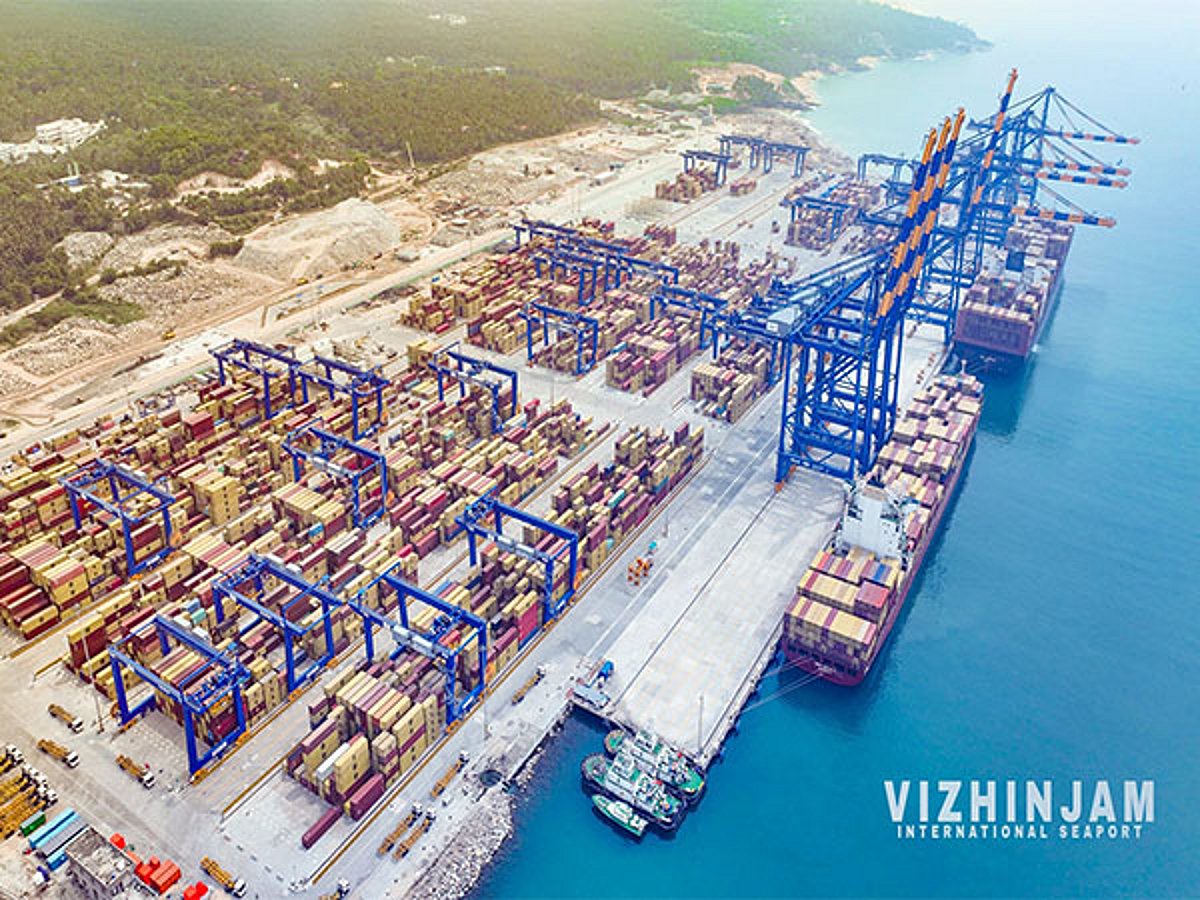
-
Vizhinjam is India’s first deep-water transshipment port, located near Thiruvananthapuram in Kerala, close to major international shipping lanes. (Wikipedia)
-
Its natural draft (~24 m) means it can host ultra large container ships with less dredging. (Wikipedia)
-
It is intended to capture a significant portion of India’s container transshipment business (currently India uses foreign transshipment hubs). This gives a strategic logistics and trade advantage. (Wikipedia)
-
In a recent news release it was stated: “554 ships have arrived and handled over 12,500 TEUs within a year” and the port is set to become a main maritime gateway by 2028. (The Times of India)
Why these matter:
These mega-ports mean India is not just incrementally building ports; it is aiming for world-scale assets. These will shift freight flows, reduce dependency on foreign transshipment hubs, enhance manufacturing/export logistics, and anchor large regional clusters (industry + logistics).2. National Maritime Policy & Ship-building Hub Strategy






Key Policy & Scheme Highlights
-
The government has rolled out major schemes to revive and scale up ship-building and the maritime ecosystem. For example:
-
The Shipbuilding Financial Assistance Scheme (SBFAS) with an outlay of ₹ 24,736 crore to incentivise ship-building, ship-breaking credit notes and domestic manufacturing via the National Ship-building Mission. (Press Information Bureau)
-
The Shipbuilding Development Scheme (SbDS) with outlay ~₹ 19,989 crore to expand ship-building capacity to ~4.5 million gross tonnage annually. (Bombay Chamber -)
-
The creation of a Maritime Development Fund (MDF) of ~₹ 25,000 crore (or higher) for investment, interest subsidy, long-term financing of maritime infrastructure. (Press Information Bureau)
-
A clear commitment to become a global ship-building hub by 2047: “India aims to become a top shipbuilding hub by 2047 …” (The Economic Times)
-
Policy emphasis on green shipping, ship-repair, ship‐recycling, skilled workforce, technology clusters. (betadgs.dgshipping.gov.in)
-
Key Reform & Strategic Pillars
-
Incentivising domestic manufacturing of vessels rather than heavy reliance on foreign yards. Reduced import dependency. (The Times of India)
-
Targeting integrated ship-building clusters (yards + repair + recycling + ancillary engineering) to generate jobs and local supply chains. (Bombay Chamber -)
-
Deep-draft ports and logistic corridors to tie maritime infrastructure with industrial, manufacturing and export zones (ports supporting ship-building and vice versa).
-
Regulatory reforms, streamlined approvals, public-private partnerships, and financing mechanisms (MDF, subsidies).
Why this matters:
The ship-building industry is strategic — for trade, for defence (ships, submarines, support vessels), for global integration. When India develops a credible ship-building hub, that means: high-value manufacturing, export earnings, technology capability, jobs, regional growth. Coupled with port infrastructure, the maritime ecosystem becomes a major growth engine.3. How Ports + Ship-building + Policy Connect for India Rising
-
With mega-ports like Vadhavan and Vizhinjam coming up, India’s port capacity & deep-water access is set to leap. That supports higher trade volumes, bigger vessels, lower logistics cost.
-
The ship-building push means India can build the vessels that sail out of its ports — from cargo ships to support vessels — making the whole value chain domestic.
-
Policy & financing (MDF, SBFAS, SbDS) lower the barriers for investment, speed up build-out, attract global ship-builders, create jobs, push the “Make in India – Ship in India” narrative.
-
Combined with other infrastructure (rail, roads, hinterland connectivity, logistics corridors) this becomes a structural shift—not just incremental improvements.
-
The result: India strengthens its position as a global maritime power, not just a coastal‐economy client. The maritime value chain (port + ship-building + repair + services) becomes an engine of export, jobs, technology, regional development.
Here’s a detailed table of major upcoming maritime and ship-building infrastructure projects in India — including the newly-added Great Nicobar Island port-complex. You can plug this into your blog-post to provide a high-impact snapshot of what’s coming.
Project Location & Scope Estimated Capacity / Highlights Investment & Status Vadhavan Port Palghar district, Maharashtra (west coast) Deep-sea port, ultra-large container ships, major gateway for west coast ~ ₹ 76,220 crore (~US$9.1 billion) approved. (Wikipedia) Vizhinjam International Seaport Near Thiruvananthapuram, Kerala (south-west coast) Natural draft ~24 m, transshipment hub, replacing dependency on foreign hubs Operational phases underway, strong strategic position. (Business Today) Great Nicobar International Container Transshipment Port (Part of Great Nicobar Island project) Galathea Bay, Great Nicobar Island (Andaman & Nicobar) Phase-1 capacity ~4 million TEUs (first phase by ~2028), full build ~14-16 million TEUs; natural depth >20 m. (India Today) Investment estimates range from ~₹ 41,000 crore to ~₹ 72,000-75,000 crore (~US$5-9 billion) depending on phase. (Business Today) -
The Great Nicobar project stands out for its strategic location near the Malacca Strait and potential to tap into regional transshipment flows. (India Today)
-
All three projects signal a leap from incremental port expansions to world-scale, deep-draft, high-capacity hubs.
-
With ship-building schemes active (ship-building development, financial assistance etc) the ecosystem around ports + ship-yards + logistics is becoming vertically integrated.
-
These projects support India’s shift from being a regional port-dependent nation to becoming a high-capacity maritime platform for trade, manufacturing and services.
-
-
Why transformative: Better roads + better ports + faster logistics = lower costs, faster trade, more manufacturing, regional development, job creation and higher living standards.
8. Energy, Environment & Nature

Growth is not just about steel and concrete — India is pushing the green frontier and nature-revival:
-
Solar rooftop, wind farms, nuclear capacity — energy diversification is accelerating, making India more resilient and future-ready.
-
The drive to get drinking water, electricity and sanitation to every corner has seen vast scale-up — rural electrification efforts have reached nearly all habitations.
-
On the environmental side: forest cover is increasing in many parts, wildlife conservation is gaining traction (for example, the introduction of cheetahs in protected areas) — so growth goes hand-in-hand with nature.
-
These twin tracks — development + environment — strengthen sustainable growth.
Here are some of the largest upcoming (and under-construction) solar and wind parks in India — showing how the country’s renewable-energy infrastructure is scaling up big time.
Major Solar Parks
1. Khavda Renewable Energy Park (also called the Gujarat Hybrid Renewable Energy Park)


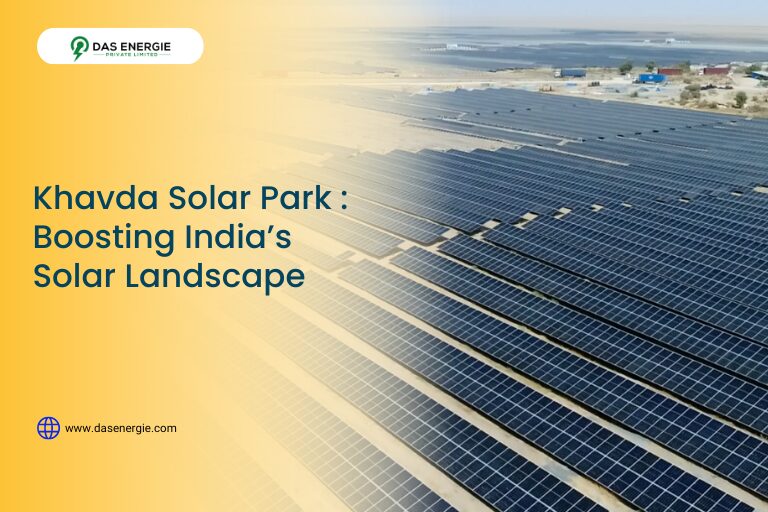



-
Location: Vighakot village, Kutch district, Gujarat. (Wikipedia)
-
Scale: Planned to generate ~30 GW (solar + wind hybrid) from the site. (POWER Magazine)
-
Land & infrastructure: It is being built on ~72,600 ha of waste land in Kutch. (Wikipedia)
-
Significance: When complete this will be among the world’s largest renewable energy parks, combining solar + wind in a hybrid set-up.
2. Bhadla Solar Park (Rajasthan)



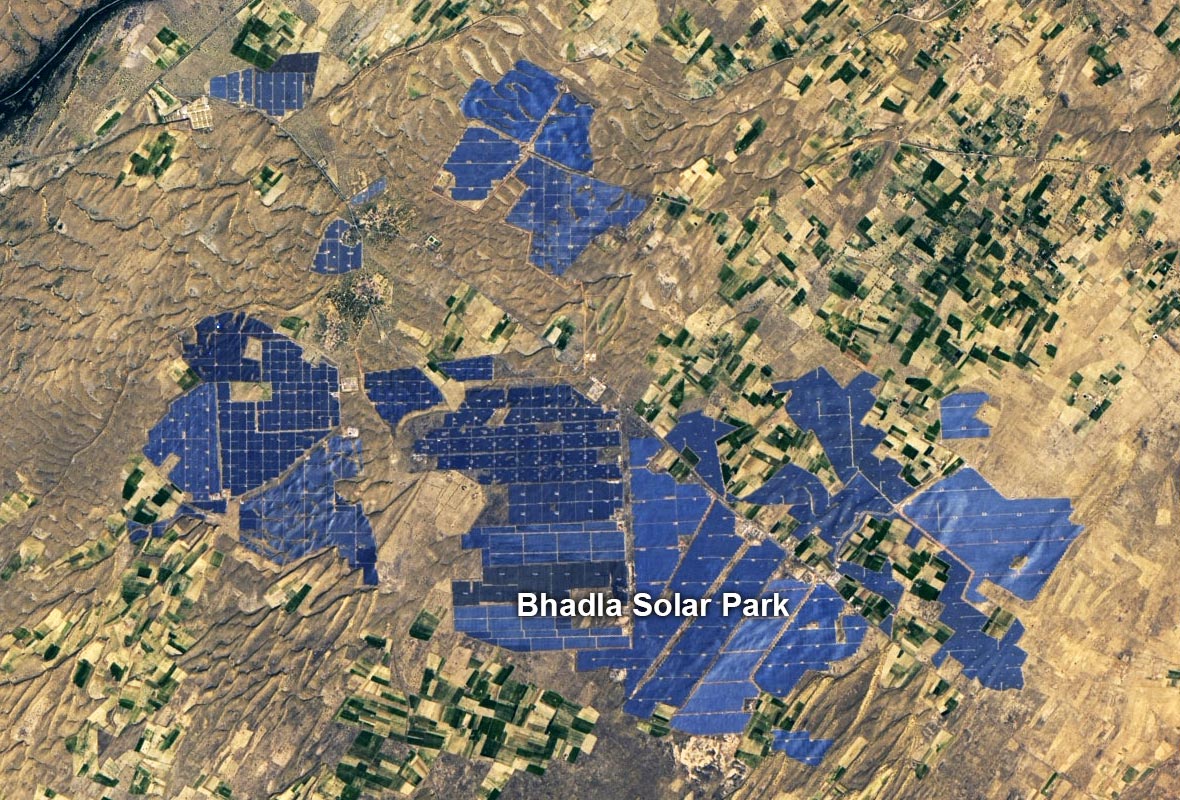

-
Location: Thar Desert, Jodhpur district, Rajasthan. (Wikipedia)
-
Capacity: ~2,245 MW installed, making it India’s largest commissioned solar park so far. (Wikipedia)
-
Area: Covers ~56 km² (~14,000 acres) in an arid region. (BYJU'S)
-
While this is already operational, it sets the benchmark and shows the scale of solar parks in India.
Major Wind / Hybrid Wind-Solar Parks
3. Hybrid Aspect in Khavda (above) – solar + wind
As noted, Khavda is a hybrid park with both solar and wind components (thus bridging both categories) and likely to be one of the largest of its kind globally.
4. Largest Onshore Wind Farms (Operational Benchmarks)



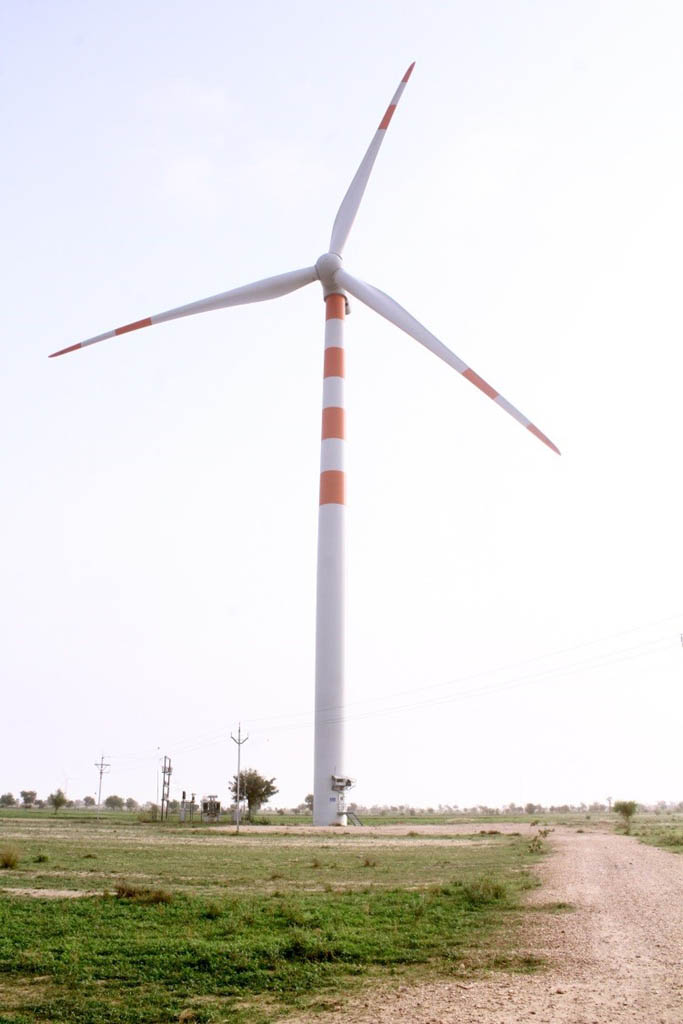

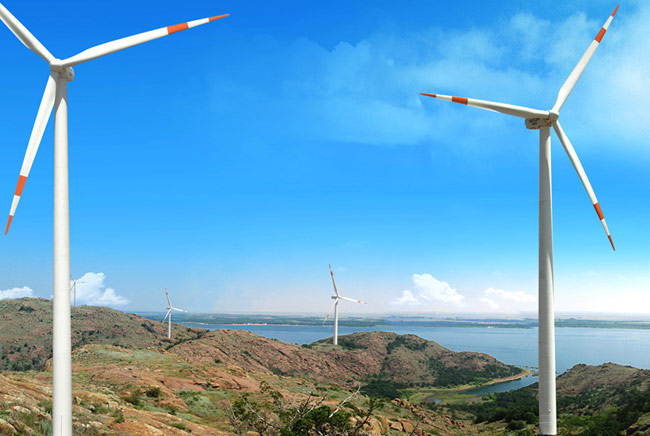
-
Muppandal Wind Farm (Tamil Nadu) – ~1,500 MW+ capacity, India’s largest operational on-shore wind farm. (renergyinfo.com)
-
Jaisalmer Wind Park (Rajasthan) – ~1,064 MW. (renergyinfo.com)
-
Note: These illustrate scale and capacity in wind.
Why These Matter
-
Scale Shift: Moving from smaller projects (few hundred MW) to ultra-mega parks (several GW). This leap in scale is critical to meet India’s renewable targets.
-
Hybrid Models: Solar + wind combinations (along with storage) improve reliability, dispatchability and grid-integration.
-
Land & Infrastructure: Sites like Kutch use large tracts of waste or marginal lands, enabling scale without displacing major agricultural or ecological zones.
-
Export / Manufacturing Link: Large parks drive demand for modules, inverters, turbines, storage, grid-infrastructure — supporting domestic manufacturing and jobs.
-
Global Leadership: With parks planned at 20–30 GW scale, India is positioning itself among the global leaders in renewable-energy capacity build-out.
-
Energy Transition & Climate Goals: These mega-parks help India shift away from fossil fuels, reduce carbon emissions, and support its climate commitments.
Nuclear Energy Breakthroughs & Upcoming Capacity in India
Here’s a deep dive into how India’s nuclear-energy sector is evolving — highlighting key breakthroughs, capacity plans and why this matters for the broader “India rising” story.
🔍 Current Status & Big Goals
-
As of 2025, India has about 8.8 GW of installed nuclear power capacity (with ~25 reactors in operation) contributing around 3% of the country’s electricity. Wikipedia+1
-
The government has pronounced an ambitious target of 100 GW nuclear capacity by 2047. World Nuclear Association+1
-
In the nearer term, India plans to expand to roughly 22-23 GW by 2031-32 as new reactors complete. Nuclear Business Platform+1
🚀 Key Breakthroughs & Technological Advances
-
The launch of the Prototype Fast Breeder Reactor (PFBR) — a 500 MW sodium-cooled fast breeder reactor at Kalpakkam — marks a major step in India’s three-stage nuclear program (which aims ultimately to leverage India’s large thorium reserves). ThePrint+1
-
India is actively working on deploying Small Modular Reactors (SMRs) — more compact, flexible reactors — with plans for at least five indigenous SMRs by ~2033. Press Information Bureau+1
-
New reactor sites have been approved: for example, the Mahi Banswara Atomic Power Plant in Rajasthan (4 × 700 MW) has received nods from the regulator. World Nuclear News
-
Domestic new reactor projects include large-scale units such as the 6 × 1000 MW plants at Mithi Virdi (Gujarat) and Kovvada (Andhra Pradesh) approved for pre-project activities. NPCIL+1
📈 Capacity & Pipeline Highlights
-
18 new reactors adding about 13.8 GW by 2031-32 are planned. Power Technology+1
-
At present there are “under-construction” and “pre-project” reactors totalling several GW: e.g., eight reactors under construction with ~6.6 GW capacity plus ten in pre-project stage with ~7 GW. World Nuclear News+1
-
Example major projects:
-
6 × 1730 MW units at Jaitapur Nuclear Power Project (Maharashtra) — ~10,380 MW capacity once built. Press Information Bureau+1
-
Mithi Virdi & Kovvada each ~6 × 1000 MW projects in planning. NPCIL
-
✅ Why It Matters for India Rising
-
Energy Mix & Clean Growth: Nuclear is a low-carbon, high-density energy source. Expanding nuclear helps India shift from fossil fuels, meet growing demand, and progress on climate goals.
-
Technology & Strategic Capability: Fast breeders, thorium fuel cycle, SMRs — these show India moving into advanced nuclear tech (not just reactors, but fuel cycle, indigenous design) which raises technology capabilities across sectors.
-
Manufacturing & Exports Potential: As India builds more reactors, produces components, fuel assemblies, and reactor-related services, it can create jobs, develop high-technology manufacturing and potentially export nuclear-tech services.
-
Energy Security & Sovereignty: Diversification of energy sources, domestic fuel-cycle capability (thorium, fast breeders) reduce external dependence and strengthen strategic autonomy.
-
Infrastructure & Investment: Large-scale nuclear plants require sophisticated infrastructure, supply chains, regulatory systems — building these strengthens the broader industrial and infrastructure base.
🎯 Key Numbers
-
Current installed capacity ≈ 8.8 GW.
-
Near-term target ≈ 22.48 GW by 2031-32. Press Information Bureau+1
-
Long-term target ≈ 100 GW by 2047. World Nuclear Association
-
Recent budgetary/Fund support: e.g., ₹20,000 crore (≈US$2.3 billion) allocated for SMR R&D.
-
-
9. Economic & Procedural Reforms: Systemic Modernisation

Behind the scenes of all the visible progress are deep procedural reforms:
-
Policies to simplify business, open manufacturing, promote exports, shift global supply-chains to India have all become priorities.
-
Incentives and reforms have attracted record Foreign Direct Investment (FDI) flows, signalling global confidence in India’s direction.
-
The “manufacture in India for the world” mindset is taking shape — with global companies shifting supply chains, setting up global capability centres (GCCs) and deeper value-chain presence in India.
-
In sum: The rules of the game are being improved, making India a more predictable, efficient, investment-friendly landscape.
1. Textile Sector: A Vast Opportunity Exploding
Key Growth Stats
-
The Indian textiles & apparel market is projected to grow at about 10 % CAGR to reach US$ 350 billion by 2030, with exports expected to hit roughly US$ 100 billion. India Brand Equity Foundation+2India Brand Equity Foundation+2
-
In 2023-24 the textile & apparel sector contributed about 2.3% of GDP, about 13% of industrial production, and about 12% of exports. Press Information Bureau+1
-
Employment: Over 45 million people are employed directly in the textile and apparel sector (with many more in the associated supply-chain) in India. Invest India+1
-
Production growth: For example, spun-yarn production increased in 2023-24 by ~5.7% compared to the previous year. citiindia.org
Government & Reform Support
-
100% FDI allowed in the textile sector, signalling strong liberalisation. tecnovaglobal.com
-
Key schemes: The “Production Linked Incentive (PLI)” scheme for textiles/man-made-fibre, technical textiles and garments is being expanded to attract investment and boost exports. Reuters+1
-
State-level policies: For example, states such as Uttar Pradesh have launched textile & garmenting policies offering electricity-duty exemptions, capital-subsidy, stamp-duty waiver etc to attract investment. Indiatimes
Why It’s Exciting
-
India has the full value-chain: fibre (cotton, silk, man-made), yarn, fabric, garmenting, exports. The scale is large and global supply-chains are shifting: India is positioned as a viable alternative to other low-cost textile hubs.
-
With rising incomes and consumer demand domestically + export demand globally, there’s a twin engine of growth: domestic consumption + export orientation.
-
Textile is labour-intensive—so growth means large employment gains, especially for women, for semi-skilled labour, for regional industry clusters.
2. Food Processing & Agri-Value Chain: Huge Momentum
Key Growth Stats
-
The food processing industry in India reached approx Rs 30,49,800 crore (~US$ 354.5 billion) in 2024. India Brand Equity Foundation
-
It is expected to grow further to Rs 45,84,415 crore (~US$ 535 billion) by end of FY26. India Brand Equity Foundation
-
From a longer-term view: the sector is projected to reach US$ 1,100 billion by FY35, US$ 1,500 billion by FY40, US$ 1,900 billion by FY45 and US$ 2,150 billion by FY47. India Brand Equity Foundation
-
FDI flows: From April 2000 to June 2025 the food processing sector attracted ~Rs 1,15,596 crore (US$ 13.4 billion) in FDI. India Brand Equity Foundation
-
Value-added statistics: In 2022-23 the food-processing industry contributed ~8.80% of GVA in Manufacturing and ~8.39% of GVA in Agriculture. India Brand Equity Foundation+1
Government & Scheme Support
-
Scheme: Pradhan Mantri Formalisation of Micro Food Processing Enterprises (PMFME): Support to ~2 lakh micro food-processing units via credit-linked subsidies. Press Information Bureau+1
-
Scheme: Production Linked Incentive Scheme for Food Processing Industry (PLISFPI): Outlay ~Rs 10,900 crore to encourage food-manufacturing, innovative SME products, Indian brands. India Brand Equity Foundation+1
-
Scheme: Mega Food Parks, Cold Chains, Agro-processing Clusters: by June 2024, 41 Mega Food Parks, 399 Cold Chain projects, 76 Agro-processing clusters, 588 food-processing units approved. India Brand Equity Foundation
-
Cooperative & allied support: Under National Cooperative Development Corporation (NCDC) assistance is provided for cooperatives in storage, processing, cold-chain and marketing of agri-produce. Press Information Bureau
Why It’s Exciting
-
Linkage between farmers ➜ processing ➜ market means higher value for primary producers, reduction of wastage via cold-chain, better shelf-life, more jobs in rural & semi-urban areas.
-
Huge domestic consumption growth (with changing diets, more packaged/processed food), plus export potential (Indian brands going global) = big runway.
-
The scheme push means small units, SHGs, cooperatives are being integrated and formalised—unlocking entrepreneurship and women’s economic participation.
-
Value chain integration (farm, storage, processing, branding) builds rural industrialisation, regional growth, reduces logistics & wastage costs.
3. Cooperatives & Rural Value-Chains: A Rising Force
Key Initiatives & Role
-
The NCDC scheme (mentioned above) supports cooperatives in processing, storage, cold-chains, marketing of agri-produce—thus strengthening rural value chains. Press Information Bureau
-
The food-processing sector schemes include support for Producer Cooperatives, Farmer Producer Organisations (FPOs), SHGs—for example PMFME scheme offers capital subsidy & seed capital to SHG members. Vikaspedia Schemes+1
-
Cooperatives in dairy, agro-processing (milk federations, sugar cooperatives, etc) are increasingly participating in processing, branding and vertical integration—thus elevating their economic role beyond primary production.
Why Cooperatives Matter
-
They anchor growth in rural & semi-urban India—helping link farm output to processing and markets rather than middle-men capture.
-
They are inclusive—often involving small farmers, women, marginalised groups. Growth in cooperatives means inclusive growth, job creation in lesser-developed regions.
-
Strong cooperatives help increase value-realisation for farmers, reduce wastage, build local infrastructure (cold-storage, processing units) and thereby contribute to regional development and poverty reduction.
Why These Three Sectors Are Explosive Engines
-
Scale & Reach: Textiles cover large labour-force and export potential; food processing taps massive domestic market + global demand; cooperatives ensure rural value-chain reach.
-
Strong Growth Drivers: Rising incomes, urbanisation, changing consumption patterns, global supply-chain shifts (for textiles), farm output & processing linkages (for food) and formalisation & digitisation (for cooperatives).
-
Policy Momentum: Significant government schemes, incentives, manufacturing push, export orientation, support for MSMEs/SHGs/FPOs—all mean systemic support.
-
Employment & Inclusive Growth: These sectors employ millions, especially women and rural populations—so growth does not just accrue to metropolitan elite but spreads broadly.
-
Global Integration: Textiles & apparel exports, food-processing exports, cooperatives linking to global value-chains—India is engaging globally, not just domestically.
-
10. Women & Girls, Social Empowerment & Inclusion
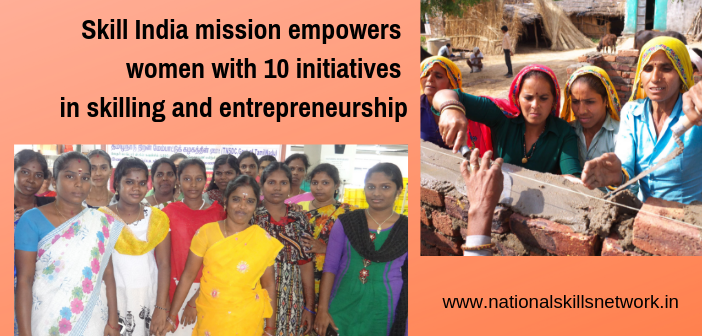
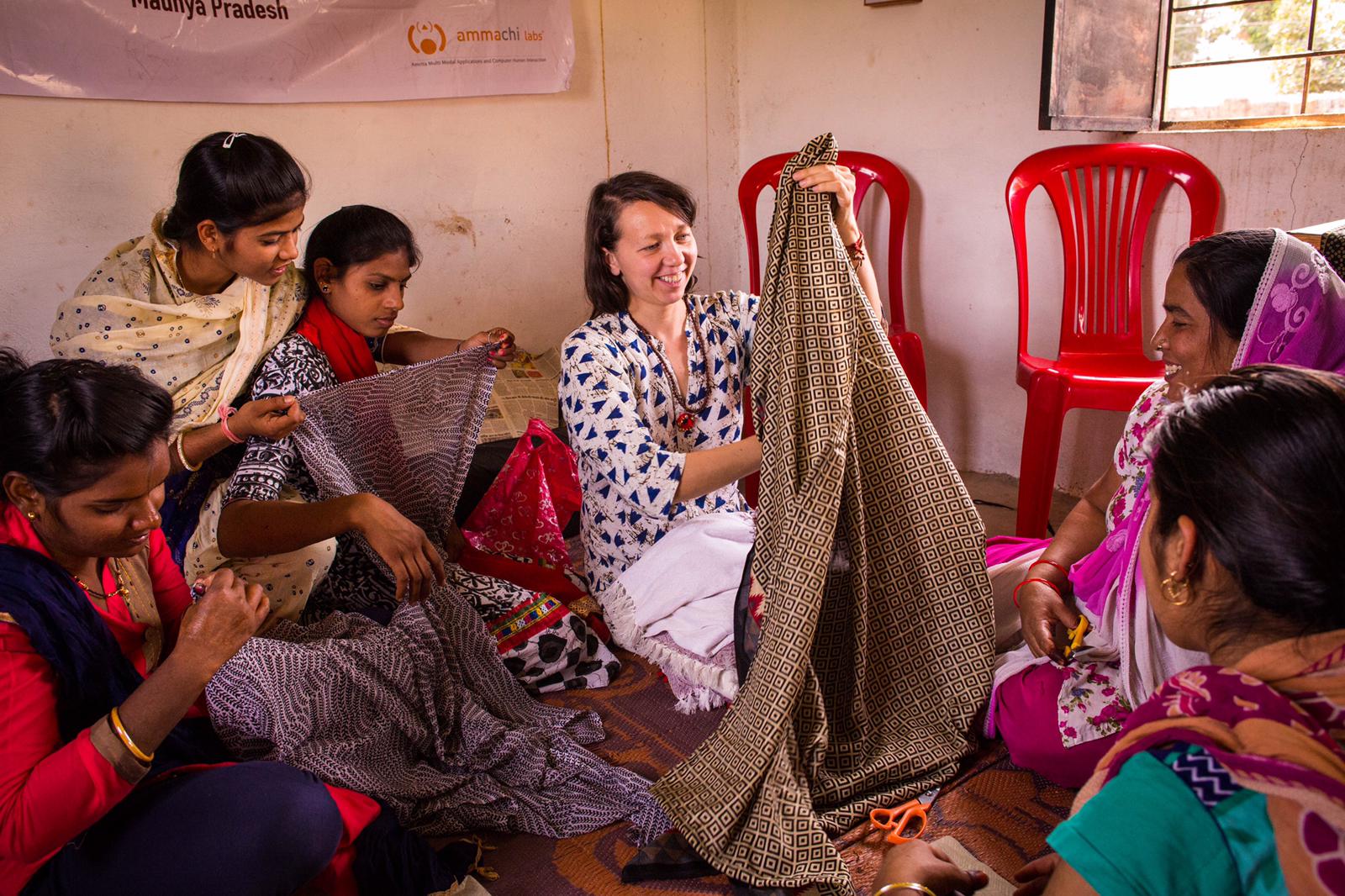
A truly rising India means that half the population is not left behind. On this front:
-
Access to quality education for girls is vastly improving — ensuring next-generation empowerment.
-
Women’s participation in the workforce, entrepreneurship, digital inclusion are rising.
-
Sanitation, drinking water, electricity and hygiene initiatives have particular impact on women and girls — freeing up time, improving health and enabling education and work.
-
Empowerment programmes, financial inclusion schemes and skill-training efforts are creating pathways for women to take decisive roles in the economy and society.
🌸 Women & Girls: Skilling, Jobs, Leadership and Health Gains
India’s rise is inseparable from the rise of its women and girls. Over the last decade, the country has seen a transformational shift in skilling, employment, entrepreneurship, digital inclusion, and maternal health — creating one of the most powerful social and economic tailwinds in modern India.
✅ 1. Skilling & Capacity Building for Women and Girls
India has built the largest women-focused skills and livelihood ecosystem in the world, spanning rural, urban, digital, and vocational sectors.
Major highlights
-
Skill India Mission has trained millions of women across trades — from plumbing, electrical, solar technicians, retail and hospitality to AI, coding, drones, and digital crafts.
-
Digi-Saksham & Digital Literacy Drives have enabled women to adopt online banking, UPI, telemedicine, micro-business management, and the gig economy.
-
Industrial Training Institutes (ITIs) for Girls have expanded rapidly, with record female enrollment in non-traditional trades like welding, electronics, automotive repair.
-
PM-Daksh, Nai Roshni, and STEP Program have supported skill development for vulnerable and marginalised women.
-
Self Help Groups (SHGs) now number over 85 lakh women, many of whom are receiving credit, livelihood training, digital-tools training, and market-linkage support.
-
Women in STEM are rising sharply — India now has one of the highest proportions of women in STEM education globally.
Impact:
Women are moving from subsistence livelihoods to formal jobs, entrepreneurship, digital work, and skilled professions — multiplying family incomes and inspiring the next generation.✅ 2. Employment, Entrepreneurship & Economic Empowerment
Women are increasingly central to India’s economic story:
Big momentum areas
-
Massive entry of women into banking correspondents, digital sales, retail, logistics, micro-enterprises, handloom-tech, food processing, and cooperatives.
-
A surge in women-led startups, especially in health-tech, ed-tech, clothing, F&B, crafts, agri-processing, and beauty.
-
UPI & digital payments have democratised micro-entrepreneurship — from home chefs to boutique designers to SHGs supplying to global e-commerce platforms.
-
Food-processing, textiles, hospitality, and retail sectors are employing more women than ever before, thanks to targeted incentives and infrastructure.
-
Government credit schemes like MUDRA, Stand-Up India, and Women Entrepreneurship Platform have funded millions of women-led enterprises.
Impact:
Women’s economic participation is not only rising — it’s becoming multi-dimensional, with leaps in incomes, stability, and leadership.✅ 3. Girl-Focused Policies: Education, Nutrition & Safety
Girls today are more empowered, educated, and protected than at any point in India’s history.
Key outcomes
-
Record-high enrolment of girls at primary, upper-primary and secondary levels.
-
Reduction in school dropout rates for girls, thanks to scholarships, bicycles, hostels, sanitary-pad distribution, and safety measures.
-
Massive improvements in nutrition through fortified foods, POSHAN tracking, and Anganwadi modernisation.
-
Stronger enforcement of child protection laws, anti-trafficking efforts, and digital safety training for girls.
-
Greater participation of girls in sports, Olympiads, STEM competitions, and leadership clubs.
Impact:
India is nurturing a more confident generation of girls — educated, ambitious, and ready to lead.✅ 4. Maternal Health: Record Reduction in Maternal Mortality Ratio (MMR)
India has achieved one of the fastest declines in maternal mortality globally over the past decade.
What improved
-
Expanded network of AIIMS, medical colleges, district hospitals, and tele-medicine centres improved last-mile access.
-
More institutional deliveries through incentives, transport services, and upgraded maternity wings.
-
Widespread antenatal care, iron-folic acid distribution, anaemia control programs.
-
Modernisation of 108 ambulance networks, newborn care units, high-risk pregnancy tracking, and real-time digital health platforms.
-
Stronger vaccination coverage for mothers and newborns.
-
Better training for ASHA workers, ANMs, and midwives — creating a robust frontline workforce.
Result
-
India’s MMR has been on a steady downward trajectory — a historic public-health achievement that reflects better care, better nutrition, and better health systems.
Impact:
Safer motherhood, healthier infants, and a stronger future generation.✅ 5. Why This Matters for India’s Rise
-
Women’s workforce participation is an economic multiplier.
-
Educated girls create healthier families and higher-wage outcomes.
-
Maternal health gains reduce long-term health burdens and improve life expectancy.
-
Women-led enterprises fuel local jobs and supply-chain resilience.
-
Digital inclusion means women can leapfrog traditional barriers.
-
SHGs and cooperatives lift entire rural economies.
This is not just social progress — it is national economic strategy.
-
Why this matters: An economy that draws on all its talent, empowers women and girls, gives them equal opportunities — that is a high-performing, resilient and inclusive economy.
11. Manufacturing, Exports & Global Capability Centres (GCCs)

India is increasingly becoming a global manufacturing and service-centre:
-
Multinational corporations are setting up Global Capability Centres (GCCs) in India — drawn by talent, scale and reform.
-
The emphasis on “Make in India for the world” is paying off — exports are rising in sectors like defence, electronics, auto, renewable energy.
-
Manufacturing, value-chains and exports create jobs, raise productivity, integrate India more deeply in global trade networks.
1. GCCs: The Scale, the Jobs, the Economy
📊 Key numbers & trends
-
India hosts over 1,700 GCCs as of FY 2024-25, employing about 1.9 million professionals and generating roughly US$ 64.6 billion in revenue. sparklehood.org+3Press Information Bureau+3NASSCOM+3
-
The number of GCC units (many companies have multiple centres) is close to 2,975 units. NASSCOM+1
-
Employment in GCCs has grown strongly: for example, from ~1.6 million earlier to ~1.9 million and is projected to reach ~2.5-2.8 million by 2030. The Indian Express+2EY+2
-
GCCs are increasingly high-value: more than 50% of them now drive portfolio and transformation roles (not just back-office). NASSCOM+1
🧮 Impact on jobs, skills & economy
-
Job creation: GCCs are key drivers of employment in tech, analytics, engineering, R&D, product design. For example:
The tech sector added ~126,000 net new jobs in FY 2024-25; GCCs contributed over 100,000 of these. India Briefing
-
Skill-creation & up-skilling: GCCs bring global practices, advanced tech stacks (AI/data-science/cloud) to India, elevating the workforce capability. Mass Tech Leadership Council+2Zinnov+2
-
Regional & economic ripple-effects: Indirect impacts include vendor-ecosystem growth, real-estate, support services, talent hubs in Tier-2 and Tier-3 cities. Dun & Bradstreet+1
-
Export & global supply-chain integration: Many GCCs are part of global operations of MNCs — supporting R&D, engineering, global business services — thus integrating India deeper into global value chains.
-
GDP contribution: With GCC revenue at ~US$ 64 billion and growing, the impact on services exports and national productivity is significant. NASSCOM+1
🎯 Why this matters
The GCC story means India isn’t just sending software or lower-cost operations overseas; rather India is becoming a strategic node for global companies: innovation, engineering, product design, global business services. That’s a big leap in maturity and has large long-term economic significance.
2. Manufacturing & R&D Centres Shifting to India
India is not just a GCC hub; it's increasingly a manufacturing + R&D hub for global companies.
🌍 Notable company shifts
-
The consulting report from Bain notes: “In electronics, manufacturers like Samsung, Foxconn and Wistron are shifting production to India because of strong manufacturing and R&D capabilities, growing supplier base, and strong policy support.” Bain+1
-
More globally: Global companies are choosing India as manufacturing hub not only for cost but also innovation, talent, supply-chain resilience. ETManufacturing.in+1
🏭 Specifics & sectors
-
Electronics & mobile manufacturing: India saw mobile production and exports grow many-fold. For example, exports of electronics and mobile phones soared driven by global players shifting/increasing production. Invest India+1
-
Automotive / auto components: India’s component ecosystem and exports are deepening as global OEMs integrate India for manufacturing and export. Frigate+1
-
R&D / engineering: Many GCCs, plus dedicated R&D centres of global firms, are establishing or expanding in India, reflecting the shift of higher value work.
-
Supply-chain reorganisation: As global firms adopt “China+1” or diversified manufacturing models, India is increasingly suitable given policy reforms, scale, talent, infrastructure. India Briefing
✅ Impact of these shifts
-
Increased foreign direct investment (FDI) in manufacturing and R&D.
-
Creation of manufacturing jobs (skilled, semi-skilled) in production, assembly, quality, logistics.
-
Strengthening of local supplier base, technological capability, engineering services sector.
-
Higher exports: as global firms manufacture in India for global markets, India becomes an export hub, increasing foreign exchange, productivity and global integration.
-
Spill-over benefits: Technology transfer, better infrastructure, up-skilling of workforce, regional industrial growth.
3. India Emerging as Export Hub for Global Companies Across Sectors
📈 Export momentum & supply-chain integration
-
India’s merchandise exports reached a record US$ 824.9 billion in FY 2024-25 (both goods + services) – a ~76% increase from FY 2014-15. Invest India
-
As per the “Make in India for the World” narrative, India is now supplying not only its domestic market but global markets across electronics, pharma, engineering goods, auto-components, textiles and services. Invest India
-
The manufacturing sector is being recognised as globally competitive: global players see India as a manufacturing base and an export base. India Briefing+1
🧭 Why India is becoming a preferred hub
-
Large, talented workforce, especially in engineering, data, design.
-
Cost competitiveness + improving infrastructure (roads, ports, logistics + schemes).
-
Government incentives: PLI schemes, special manufacturing zones, export-oriented policies.
-
Supply-chain resilience: global firms shifting/adding India to diversify risk, reduce dependence on single country or region.
-
Domestic scale + global reach: Big internal market plus access to global supply chains.
🚀 Examples & sectors
-
Electronics: Mobile phones & electronics goods exports grew many-fold — manufacturing by global brands in India.
-
Pharma: India further strengthened as global supplier of generics and allied products, exporting globally.
-
Auto & components: India being integrated more strongly into global supply chains.
-
Services & engineering: With GCCs and R&D centres, India is exporting high-value services and engineering innovation.
✅ Global Companies Expanding Manufacturing, R&D & GCC Operations in India
Company | Sector | What They Are Doing in India -----------------------|------------------------|-------------------------------------------------------------- Apple | Electronics | Rapidly expanding iPhone manufacturing; suppliers scaling. Foxconn | Electronics | Large new facilities in Tamil Nadu, Karnataka, Telangana. Samsung | Electronics | Expanding smartphone & semiconductor component capacity. Google | Tech/AI | Major AI/ML R&D centre; Pixel assembly partners in India. Tesla Suppliers | EV/Auto | Dozens of Tier-1/2 vendors exploring factories in India. Boeing | Aerospace | Largest global engineering center outside US in Bengaluru. Airbus | Aerospace | Building helicopter final-assembly line with Tata in India. Siemens | Engineering/Tech | Expanding smart-factory, rail, and energy R&D operations. Bosch | Auto/Tech | One of the largest Bosch R&D campuses globally in India. Cummins | Engines/Powertrain | Scaling manufacturing & R&D for global export markets. Schneider Electric | Energy/Automation | India becoming a global export hub for electrical products. General Electric (GE) | Aviation/Power | GE Aero engines & India engineering center expanding fast. ZF Friedrichshafen | Auto Components | Large R&D & manufacturing base for e-mobility components. Continental | Auto Components | India engineering center developing global automotive tech. Walmart | Retail/Tech | One of the biggest global tech & sourcing hubs in India. JPMorgan Chase | BFSI Technology | India GCC is among its largest tech & operations centres. Morgan Stanley | BFSI Technology | Rapidly scaling engineering, analytics & fintech operations. Microsoft | Tech/Cloud/AI | Multiple data centers, R&D, global engineering units. Adobe | Software/AI | India is one of Adobe’s largest R&D locations worldwide. SAP | Enterprise Software | Expanding engineering, product development, GCC roles. Siemens Energy | Energy/Engineering | Global engineering & grid-tech R&D being scaled from India.✅ How This Strengthens India’s Rise
-
These expansions show that India is now a strategic global hub for manufacturing, engineering, and advanced research — not just a cost-optimisation centre.
-
Global capacity is shifting to India because of talent depth, improving infrastructure, supply-chain resilience, favourable policies, and rising domestic demand.
-
These 20 companies alone represent tens of billions of dollars of economic activity, creating high-skill jobs, technology transfer, global export capability and deeper value-chain integration, accelerating India’s transition into a global manufacturing and innovation powerhouse.
-
Why This Matters & The Broader Significance
-
Jobs & careers: The growth of GCCs + manufacturing shifts creates high-quality jobs, especially for young engineers, data professionals, designers, manufacturing operators.
-
Technology upgrade: The shift to R&D, design, global manufacturing means India is moving up the value-chain, not just doing low-cost work.
-
Export-led growth: Manufacturing + services exports mean India’s economy becomes more globally connected, less reliant purely on domestic consumption.
-
Regional development: GCCs and manufacturing plants in cities beyond the metro hubs spread economic benefits to Tier-2/3 cities and lesser-developed regions.
-
Supply-chain resilience & geopolitics: Global firms relocating or adding India helps India position as a stable partner and part of global value chains, enhancing strategic economic leverage.
-
Economic transformation: These developments help shift India from a services-led, import-dependent economy to a diversified, manufacturing + innovation + export powerhouse.
-
12. Vision Forward & Why the Next Decade Looks Even Brighter
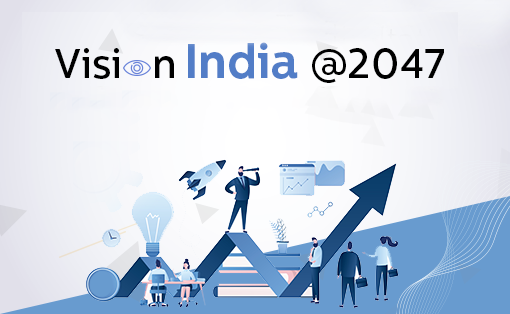
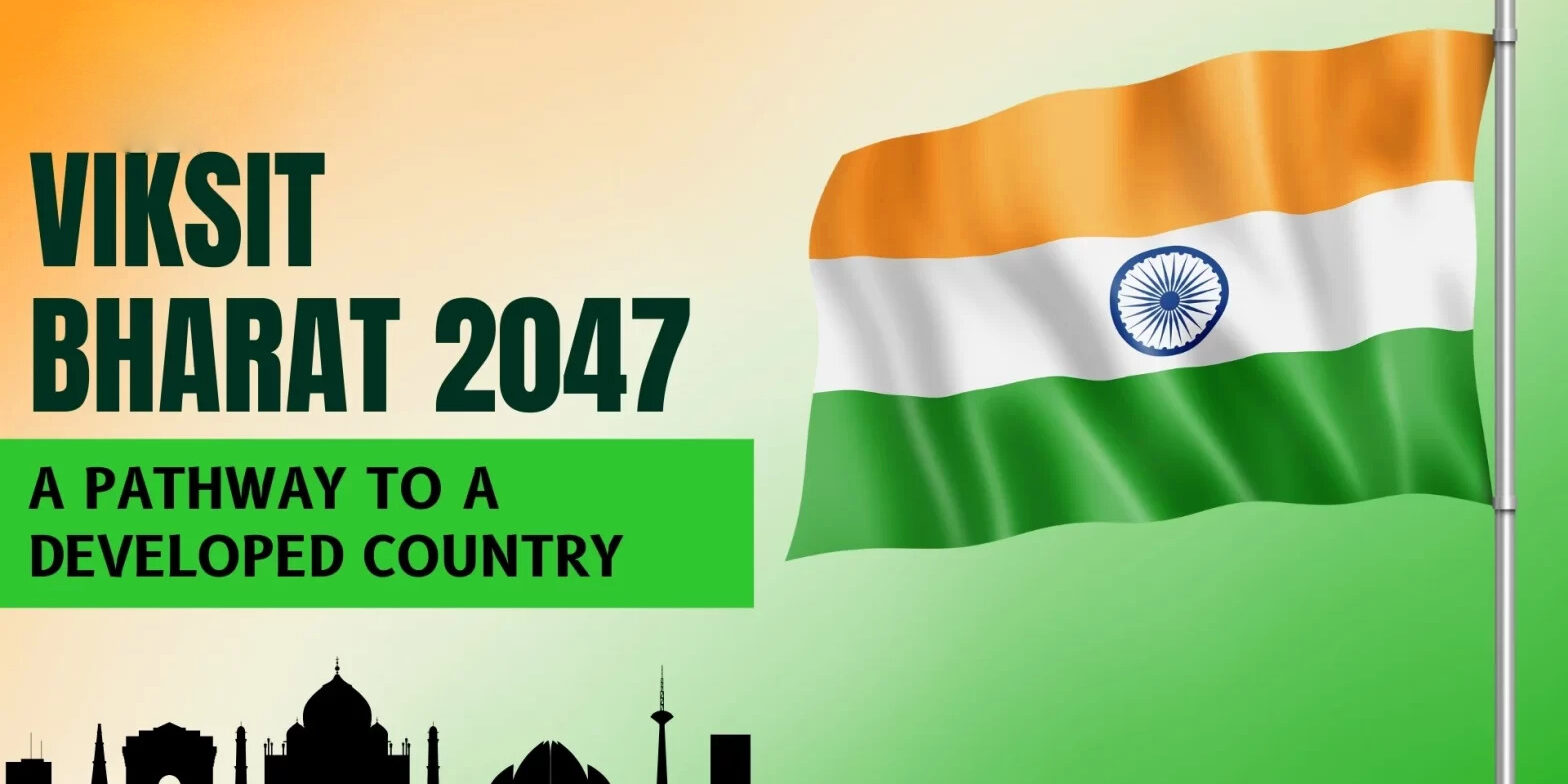
📊 Key Figures & Graphs
| Indicator | Figure / Trend | Source & Notes |
|---|---|---|
| Per capita GDP (current US$) | ~ US$ 2,696 in 2024 for India. (FRED) Note: this is nominal, so low compared to developed economies — but the trend is upward. | |
| Per capita GDP (USD) growth recent years | 2021: ~US$2,239; 2022: ~US$2,347; 2023: ~US$2,530; 2024: ~US$2,696. (FRED) | Shows steady year-on-year rise. |
| Defence exports | In FY 2024-25, exports reached ₹ 23,622 crore (~US$2.76 billion) — a 12.04 % increase over FY 2023-24. (Press Information Bureau) Over past 10 years (2015-2025): cumulative ~₹1,09,997 crore. (MP-IDSA) | Clearly dramatic growth in export capability. |
| Export growth (merchandise + services) | April–Aug 2025: USD 346.10 billion (vs USD 329.03 billion in same period 2024) — growth ~5.19 %. (Press Information Bureau) | Signals rising international trade strength. |
| Fintech / Digital payments – Unified Payments Interface (UPI) | October 2025: Value = ₹ 27.28 lakh crore; Volume = ~20.7 billion transactions. (adda247) The upgrade: India now drives ~85 % of its digital transactions via UPI. (The Times of India) | Enormous scale of digital infrastructure. |
| Fintech investment / unicorns | By 2022: ~US$ 35 billion invested across fintech segments; 18 fintech unicorns added in 2021-22. (Bain) | Shows deepening of fintech ecosystem. |
| Manufacturing / export potential (non-petroleum/non-gems goods) | April–Aug 2025: Non-petroleum/non-gems exports = USD 146.70 billion (vs USD 136.13 billion a year earlier) — growth ~7.76 %. (Press Information Bureau) | Important because it reflects value-added trade. |
| Per capita Real National Income (India, rupee-terms) | 2016-17: ~₹ 1,03,870 at current prices; 2017-18: ~₹ 1,12,835 (increase ~8.6 %). (Statistics and Programme Implementation) | Useful for domestic narrative in rupee-terms |
What emerges from all these threads is a picture of a country at an inflection point. The foundations are laid: technological competence, educational depth, infrastructure heft, human development leaps, global integration and reform momentum. The next decade looks poised for stepping from “good” to “great”:
-
Generation after generation of young Indians are more skilled, connected and globally aware.
-
The digital economy and deep-tech wave (AI, quantum, biotech, drones, autonomous systems) will open new frontiers for India.
-
Global supply chains are shifting: India has the chance to be the hub for manufacturing, services and technology not just for itself but for the world.
-
With more inclusive growth, women and girls empowered, underserved regions catching up, the country moves from “growth for a few” to “growth for all”.
-
As infrastructure, health, education and manufacturing converge, living standards, job creation and innovation multiply — enabling a virtuous upward spiral.
India’s story over the past ten years is one of transformation — bold, purposeful and deeply optimistic. From science labs to highways, from fintech apps in rural villages to drones zipping across skies, from new medical colleges to women launching startups — this is the country rising. The pieces are in motion, the system is changing, and the energy is palpable.
Let’s look ahead with confidence: the world is watching, the world is engaging — and India is ready to lead in many fronts.

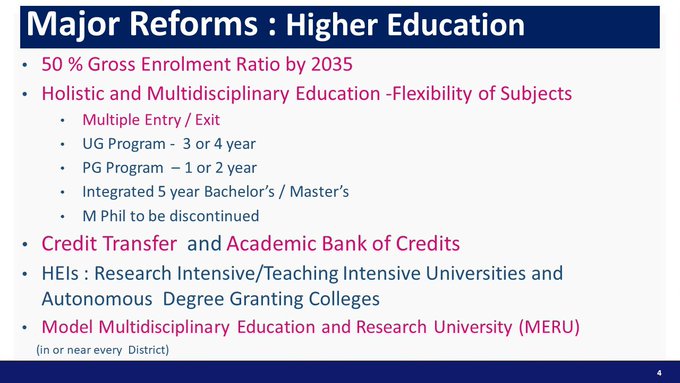





No comments:
Post a Comment